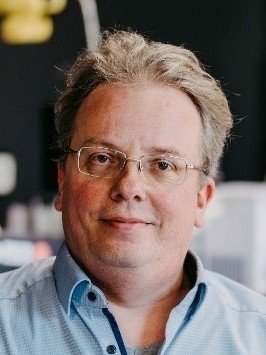Claus-Dieter Ohl

Prof. Dr. rer. nat. Claus-Dieter Ohl
Session: Mechanical and Thermal Preprocessing
Title: Cavitation Bubbles are
Micromachines for Wet
Physical Processing
Prof Claus-Dieter Ohl (*1970) did his PhD in Physics in Göttingen under the supervision of Prof Werner Lauterborn in 1998. From 1999 till 2005 he was Postdoc at Johns Hopkins with Prof Andrea Prosperetti and the University of Twente with Prof Detlef Lohse. In 2005 he was awarded the VIDI grant from the Dutch Science Foundation and started a research group in Twente on “Jetting into Cells”. Since 2007 he joined the newly founded School of Physical and Mathematical Sciences at the Nanyang Technological University in Singapore as Assistant Professor and was promoted in 2012 as Associate Professor. In 2017 he joined the University of Magdeburg and is chairing the Department of Soft Matter in the Faculty of Sciences. Prof. Ohl remains fascinated from the richness of fluid mechanics in presence of bubbles. This kept his research looking at boiling phenomena, nanobubble generation, cavitation in microfluidics and its use for biological & medical applications. Besides he has a keen interest in linear and non-linear acoustics.
Cavitation Bubbles are Micromachines for Wet Physical Processing
Small bubbles in liquids can be resonantly driven with ultrasound. These so called cavitation bubbles then perform volume oscillations, develop non-spherical modes and create fast and directed flows. In several critical industrial processes ultrasound driven cavitation bubbles are already utilized. The acoustic field not only supplies energy for the oscillations, but also creates forces on the bubbles. As a result the bubbles move along gradients of the sound field, move towards boundaries and interact which each other. Here, clever designs allow the steering of the bubbles to the locations of interest. In the first part of the presentation I’ll introduce the physics of ultrasound driven bubbles. In the second part I’ll discuss four selected processes, namely cleaning of surfaces from water filtration membranes to semiconductors, the emulsification of immiscible liquids, the extraction of biological cell content, and the material erosion and nanoparticle generation. I’ll conclude with an outlook how acoustic cavitation bubbles i future could be controlled as microscopic steerable robots.






